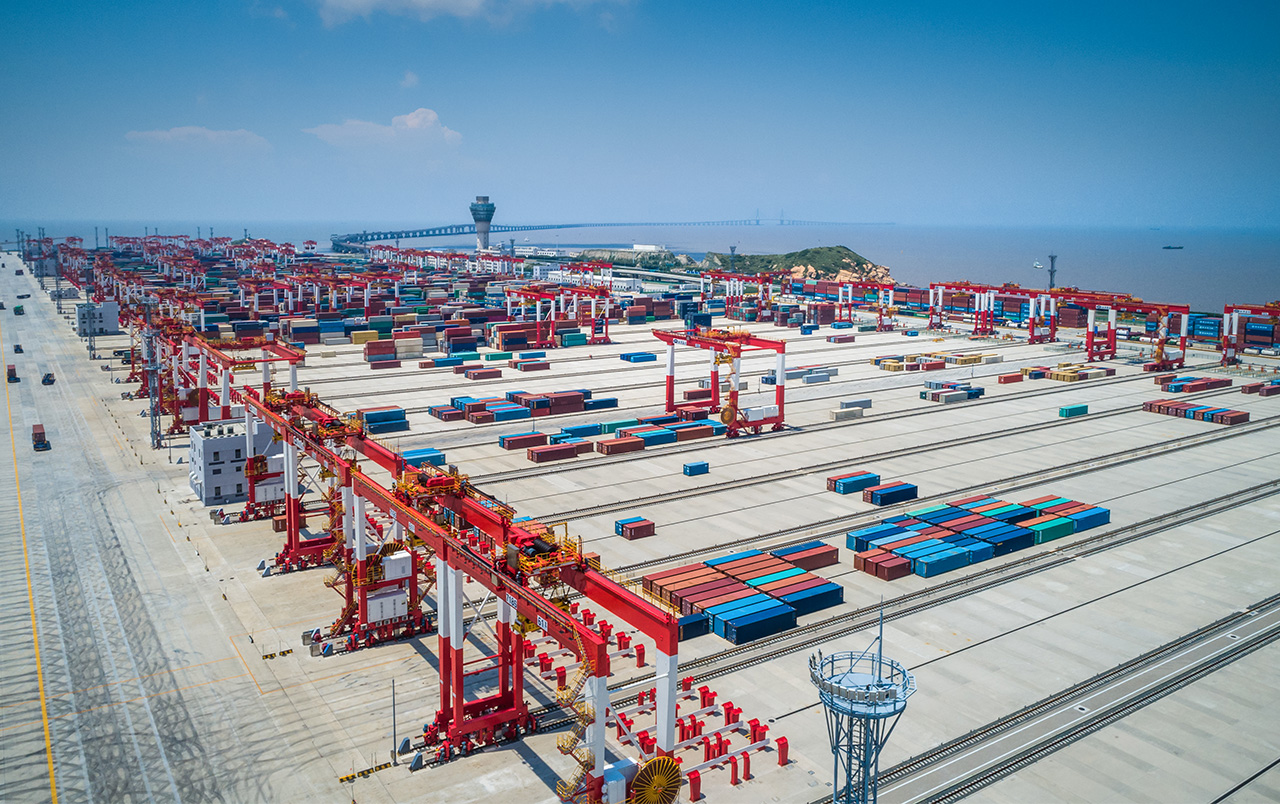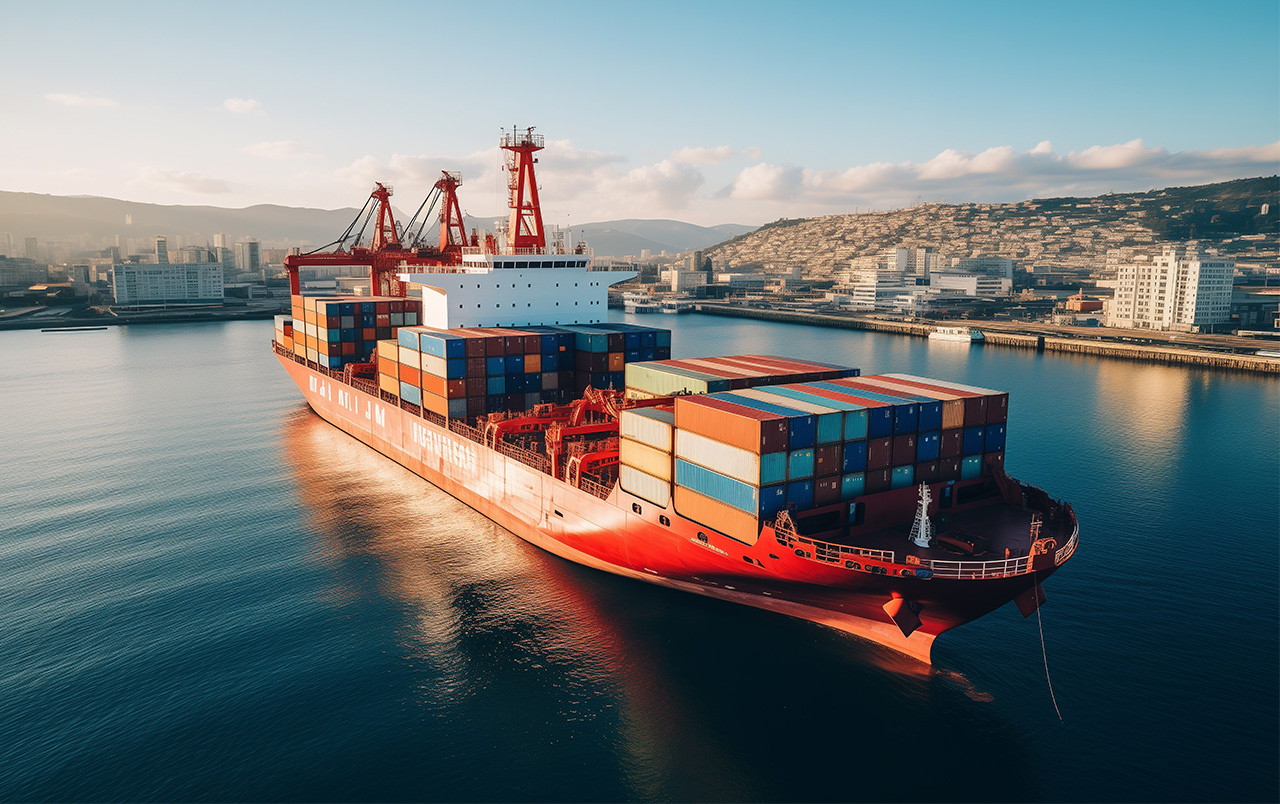
A reach stacker is a powerful container-handling machine used to lift and stack containers efficiently. It's crucial in ports, rail yards, and warehouses for optimizing space and streamlining operations.
In logistics, reach stackers improve container handling speed, safety, and storage efficiency. They help manage high volumes of cargo, making supply chains more effective and cost-efficient. In this post, you’ll learn about the key features, types, and applications of reach stackers, and why they are essential in today’s logistics world.
The Features of a Reach Stacker
Telescopic Boom: What Makes It Special?
The telescopic boom is a key feature of a reach stacker. It allows the machine to extend and retract, reaching over containers to lift them. This design makes it possible to stack containers up to six high in the first row, and even in the second or third rows. The boom provides flexibility and ensures the stacker can work in confined spaces, reducing the need for multiple machines.
Lifting Capacity
Reach stackers are designed to handle a wide range of container sizes and weights. They can lift containers weighing from 10 to 45 tons, depending on the model. This makes them perfect for both light and heavy-duty lifting, handling everything from empty containers to fully loaded ones. Their lifting capacity allows operators to safely move large, heavy cargo in busy ports and rail yards.
Flexibility in Container Handling
Reach stackers are versatile machines. They can handle both empty and full containers, making them essential in operations where cargo changes frequently. The spreader, attached at the end of the boom, can be adjusted to fit different container sizes, whether it’s a 20-foot or 40-foot container. This flexibility allows them to perform a variety of tasks, from unloading ships to stacking containers in the yard.
Maneuverability and Precision
One of the main advantages of reach stackers is their ability to navigate tight spaces. They are equipped with an advanced steering system that allows for precise and smooth movement, even in crowded and confined areas. Operators can easily maneuver the stacker around stacks of containers or vehicles, which is essential in busy ports and warehouses.
Safety Features
Safety is a priority in reach stacker design. Modern machines come with stability control systems to prevent tipping during operations. Anti-tip mechanisms and load-sensing technology automatically adjust the lifting height and angle to ensure safe handling. Some models even feature a rotating cabin for better visibility, helping operators monitor their surroundings and reduce the risk of accidents.

The Different Types of Reach Stackers
| Type of Reach Stacker | Description | Key Features |
|---|---|---|
| Empty Container Reach Stackers | Designed to handle empty containers, these stackers have a lighter lifting capacity (10 to 20 tons). | Efficient stacking and unstacking in high-density areas, maneuverable, suitable for storage yards. |
| Loaded Container Reach Stackers | Built to handle fully loaded containers weighing up to 45 tons. | Reinforced booms, heavy-duty hydraulic systems, essential for loading/unloading at ports and terminals. |
| Intermodal Reach Stackers | Specialized for handling containers across trucks, railcars, and ships. Often equipped with piggy-back features for simultaneous handling of trailers. | Advanced lifting capabilities, long wheelbase, used in rail terminals and intermodal transportation operations. |
| Automated Reach Stackers | Operate without manual intervention, using robotic technology and advanced control systems for high-volume operations. | Continuous operation, reduces human error, optimizes container handling speed, common in busy ports and warehouses. |
How Reach Stackers are Used in Various Industries
Ports and Container Terminals
Reach stackers play a crucial role in ports and container terminals. They are primarily used for loading and unloading containers from ships and trucks. Their ability to lift and stack containers up to six rows high helps maximize space in busy port areas. This increases operational efficiency, reduces wait times for ships, and speeds up cargo handling. With their precise maneuvering capabilities, reach stackers also help move containers in tight spaces, making them essential for smooth terminal operations.
Rail Yards and Intermodal Stations
In rail yards and intermodal stations, reach stackers are used to load and unload containers from trains. Their telescopic booms allow them to reach containers stacked in railcars, making them ideal for transferring containers between different transportation modes. These stackers ensure quick turnaround times, improving the flow of goods between trains, trucks, and ships. Intermodal reach stackers, specifically designed for this purpose, have additional features such as the ability to handle trailers, making them highly efficient in rail terminals.
Warehouses and Distribution Centers
In warehouses and distribution centers, reach stackers are vital for organizing and stacking containers and cargo. They are used to transport containers from storage areas to loading docks or vice versa. Their ability to stack containers in high-density areas helps maximize warehouse space. Reach stackers can also handle a variety of cargo, from standard containers to heavy materials, making them versatile tools for inventory management. Their precision and flexibility make them ideal for managing large volumes of goods efficiently.
Construction Sites and Industrial Applications
Reach stackers are not just limited to ports and warehouses; they also prove useful in construction sites and industrial applications. On construction sites, they can lift and move heavy materials like steel beams, pipes, and machinery. Their lifting capacity and versatility allow them to handle bulky items that traditional forklifts might struggle with. Whether it's stacking materials or transporting them across job sites, reach stackers help improve efficiency in heavy-duty industrial environments.
The Key Advantages of Using a Reach Stacker
Efficiency and Speed in Container Handling
Reach stackers significantly improve the speed and efficiency of loading and unloading operations. Their powerful hydraulics and precise control systems allow operators to move containers quickly and accurately. Whether it's unloading ships, stacking containers, or moving cargo, reach stackers handle the work faster than manual labor or older equipment. Their speed reduces waiting times for ships, trucks, and railcars, boosting overall productivity.
Space Optimization and Container Stacking
One of the main advantages of reach stackers is their ability to optimize storage space. Thanks to their telescopic boom and high lifting capabilities, they can stack containers several layers high in tight spaces. This vertical stacking reduces the footprint of storage areas, allowing for more containers to be stored in the same space. This is especially valuable in crowded ports and terminals where space is limited.
Cost-Effectiveness and Productivity
Reach stackers contribute to reducing operational costs and boosting productivity. Their ability to stack containers efficiently and handle heavy loads minimizes the need for multiple machines and workers. This reduces labor costs and the risk of damage to goods, which can be expensive to repair. By increasing handling speed and reducing operational bottlenecks, reach stackers help companies save money and increase throughput.
Improved Safety for Workers
Safety is a top priority in reach stacker design. Modern machines are equipped with advanced safety features such as stability control, anti-tip systems, and load-sensing technology. These features help prevent accidents, making container handling safer for operators. Compared to manual labor or older equipment, reach stackers reduce the risk of injury and ensure that workers can perform tasks efficiently and safely.
How to Choose the Right Reach Stacker for Your Needs
Factors to Consider
When selecting a reach stacker, several factors should be taken into account to ensure it meets your needs. The most important factors include:
Capacity: Determine the lifting capacity required for your operations. Reach stackers can lift containers ranging from 10 to 45 tons, so choose one that suits the size and weight of the containers you'll be handling.
Reach: Consider the reach of the boom. Depending on your workspace, you may need a stacker with a longer boom for stacking containers in tight areas or over other containers.
Maneuverability: If you're working in a crowded or confined space, look for a model with excellent maneuverability. Reach stackers with advanced steering systems are better suited for these environments.
Choosing Between Manual, Electric, and Hybrid Models
Reach stackers come in three main types: manual, electric, and hybrid models. Each model offers unique benefits depending on your operational needs:
Manual Reach Stackers: These are powered by diesel engines and are ideal for heavy-duty tasks in large, open spaces like ports and rail yards. They offer powerful lifting capabilities but have higher fuel costs.
Electric Reach Stackers: Electric models are more eco-friendly and cost-efficient. They are ideal for indoor use, especially in warehouses or distribution centers, where air quality and noise are concerns. However, they may have limited lifting capacity compared to diesel-powered models.
Hybrid Reach Stackers: These combine the benefits of both electric and diesel models. Hybrid stackers offer fuel efficiency and reduced emissions while still providing the power needed for heavy-duty operations. They are a great choice for businesses looking to reduce their carbon footprint without sacrificing performance.
Reach Stacker Attachments
Reach stackers come with a variety of attachments that can increase their versatility. Some common attachments include:
Spreader Bars: Used to handle multiple containers at once, spreaders allow reach stackers to carry two containers simultaneously, improving efficiency.
Clamps: Ideal for handling non-standard cargo, such as pipes, timber, or large boxes, clamps provide a secure grip without damaging the material.
Forks: For handling bulk or palletized goods, reach stackers can be equipped with adjustable forks that allow for different pallet sizes.
Rotating Spreaders: These attachments make it easier to position containers at various angles, allowing for more precise placement in tight spaces.
Conclusion
Reach stackers are essential for efficient container handling in ports, rail yards, and warehouses. They improve speed, optimize space, and ensure safe operations, making logistics more efficient.
Investing in a high-quality reach stacker boosts productivity, reduces operational costs, and enhances safety. It's a long-term investment for businesses aiming to streamline operations and improve their bottom line.
FAQ
Q: What is a reach stacker?
A: A reach stacker is a container-handling machine designed to lift and stack containers efficiently in ports, rail yards, and warehouses. It features a telescopic boom, allowing for vertical stacking and precise maneuvering in tight spaces.
Q: How do reach stackers improve logistics operations?
A: Reach stackers increase speed, efficiency, and space optimization in container handling. They reduce operational costs, improve safety, and allow for more containers to be stored in the same area.
Q: What types of reach stackers are available?
A: There are empty container reach stackers, loaded container reach stackers, intermodal reach stackers, and automated reach stackers, each designed for specific tasks like handling different types of cargo and improving operational efficiency.
Related Blogs
-
 Have you ever wondered how ports move massive containers so quickly? Reach stackers are the machines behind the magic, combining power and precision to handle heavy loads. Learning how to operate a reach stacker is critical for safety and efficiency. Mistakes can cause accidents, equipment damage, or delays in port operations. This guide is made for port workers, warehouse staff, and logistics personnel. In this post, you’ll learn how to operate a reach stacker safely and step by step, even if you're just starting out.blogs
Have you ever wondered how ports move massive containers so quickly? Reach stackers are the machines behind the magic, combining power and precision to handle heavy loads. Learning how to operate a reach stacker is critical for safety and efficiency. Mistakes can cause accidents, equipment damage, or delays in port operations. This guide is made for port workers, warehouse staff, and logistics personnel. In this post, you’ll learn how to operate a reach stacker safely and step by step, even if you're just starting out.blogs -
 Have you ever wondered how ports move massive containers so quickly? It’s not magic—it’s the reach stacker. These powerful machines play a key role in lifting, moving, and stacking containers. They keep goods moving in ports, terminals, and warehouses every day. In this post, you’ll learn what a reach stacker does, why it's important in logistics, and how it improves container handling operations worldwide.
Have you ever wondered how ports move massive containers so quickly? It’s not magic—it’s the reach stacker. These powerful machines play a key role in lifting, moving, and stacking containers. They keep goods moving in ports, terminals, and warehouses every day. In this post, you’ll learn what a reach stacker does, why it's important in logistics, and how it improves container handling operations worldwide. -
 Can a SANY reach stacker really replace a crane? This question has become increasingly relevant in logistics and port operations. SANY reach stackers are widely used for container handling, but many wonder if they can also perform crane-like functions. In this post, we’ll explore whether a SANY reach stacker can be used as a crane, highlighting its versatility in container handling and other lifting tasks. You'll learn about its key features, applications, and advantages in situations where traditional cranes may not be practical.
Can a SANY reach stacker really replace a crane? This question has become increasingly relevant in logistics and port operations. SANY reach stackers are widely used for container handling, but many wonder if they can also perform crane-like functions. In this post, we’ll explore whether a SANY reach stacker can be used as a crane, highlighting its versatility in container handling and other lifting tasks. You'll learn about its key features, applications, and advantages in situations where traditional cranes may not be practical.









